This year’s KTH Energy Dialogue focused on impactful sustainable research

The pleasure of getting together again on campus was evident during this year’s edition of KTH Energy Dialogue. More than 200 participants gathered to take part in discussions and share new research findings in the energy field. This year’s event focused on sustainable development and the impact of research.
KTH Energy Platform director, Lina Bertling Tjernberg, welcomed participants alongside deputy director Christophe Duwig.
“We’re delighted to welcome everyone back to campus after last year’s digital event. At long last, we can see each other again and be inspired by each other’s work. Today, I encourage you to take this opportunity to learn something new and get to know a stranger!” Bertling Tjernberg said.
President of KTH, Sigbritt Karlsson, delivered a welcome address in which she stressed the importance of being able to meet face-to-face again.
“Today, we’re focusing on the energy segment – a segment that is one of KTH’s specialities. We need more interdisciplinary work to address the energy issues of the future. Politicians can take small steps, like at the COP26 conference which achieved some success, but was also a disappointment. KTH can take on greater responsibility and in more areas than it does today,” said Karlsson.
“It’s important that we continue to share our knowledge, and this must be done in an understandable way so that the message can be communicated effectively,” she added.
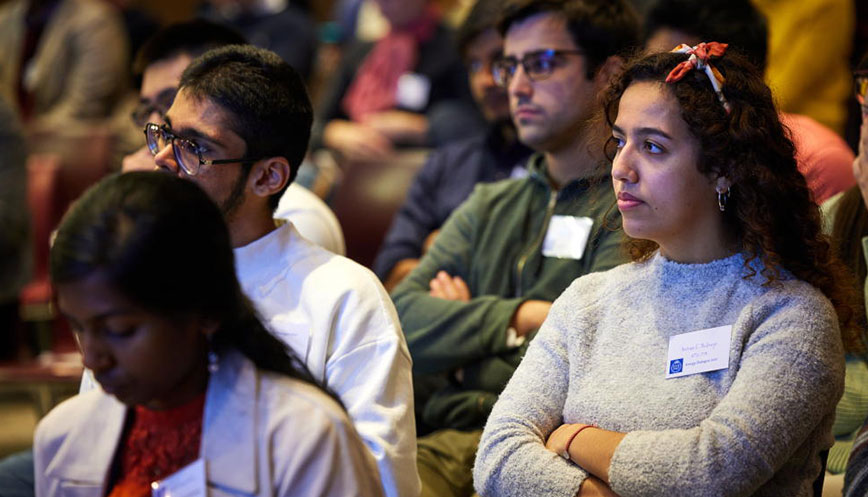
When industry meets academia
The day’s moderator, Willy Silberstein, then opened the day’s first panel discussion entitled “Sustainable developments: how science and business meet”.

Panelists included Jenny Larsson, Country Managing Director, Hitachi Energy, Sweden; Lena Österberg, Head of Sustainability Research & Strategy Carnegie; Per Lundqvist, Professor and Vice President for Sustainability at KTH; Göran Finnveden, Professor and Former Vice President for Sustainability at KTH; and Bertling Tjernberg, professor and 2021 Power Woman of the Year .
“Our strategic partnership with KTH is crucial for us to continue to be among the leading companies in the energy sector. This is where we find new talent, can collaborate to support good education standards and start research collaborations that contribute to a world-class development,” said Jenny Larsson.
She emphasized how open and close collaboration and discussion are important for developing digitalisation with the help of areas such as AI, AR and VR. She also emphasized that the industry needed more people who realized the importance of life-long learning.
“We also need to increase inclusion and contribute to equality, both of which must start with the academy. This is where we need to work together to make a difference,” says Larsson.
Lena Österberg stressed how society faces a fundamental change in which sustainability is the rule.
“This change is driven by politicians and consumers - and companies that fail to adapt will lose out.”
Innovation is the key to successful transformation, she said. To better succeed , clearer communication about research and findings is needed, especially with funders.
“Only when we understand the advances that are being made can we also increase the inflow of funding. Challenges also exist in political regulation. We need cheaper green capital that can make a difference.”
More projects build sustainable development
The former and current deputy vice-chancellors for sustainable development, Göran Finnveden and Per Lundqvist respectively, provided a look back at how KTH has changed in the past 10 years.
“Today, we have 10 years’ experience and have come a long way, both in research and education, but we can go even further. Ignorance persists about the transformation we are facing and we need to work better together to increase the pressure and ensure that policies really reduce emissions,” said Finnveden.
He was backed up by Lundqvist, who also underlined the need to increase collaboration both horizontally and vertically between different areas and disciplines.
“The KTH Climate Action Centre is a great example of how we can accelerate progress by working on a project-by-project basis. We need to find more projects where we can contribute together with industry and reach out with knowledge that solves problems,” said Lundqvist.
Clearer political instruments are needed to stop carbon dioxide emissions, said Bertling Tjernberg, professor in electricity networks.
“We must use all the opportunities and all the technologies we have, as well as think constructively, positively and not get caught up in historical controversies. New collaborations show the way forward, including those created at the university.”
Interactions within the industry need to increase and new strategies are needed to succeed.
“Working together at a competence centre is a great start - where there are financial opportunities to invite smaller companies into collaborations.”
Innovative projects
After a short break and an opportunity to take a closer look at the day’s poster exhibition, the stage was taken by four researchers who presented forward-looking research projects.
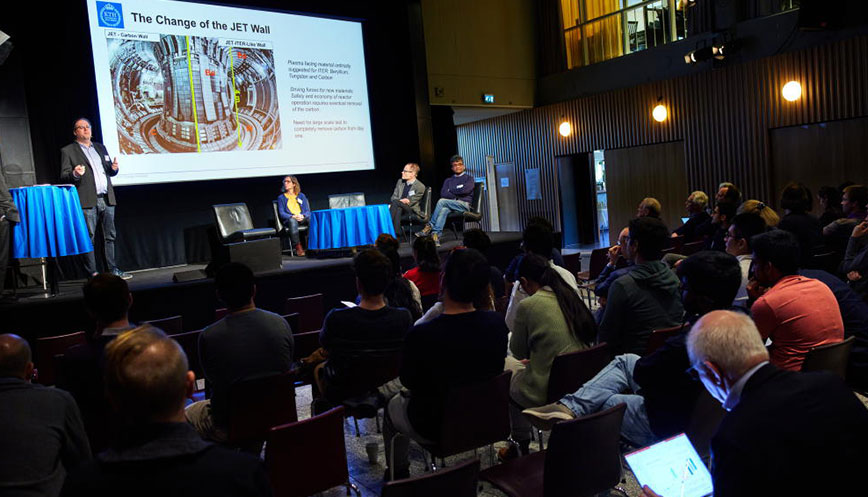
Professor Joydeep Dutta spoke about research into a nanotechnology-based water purification technology that can also use the diffusion between fresh and salt water to extract energy. When a future product is placed at the mouth of a river, the difference between salt and fresh water can be used to generate electricity through new forms of capacitors.
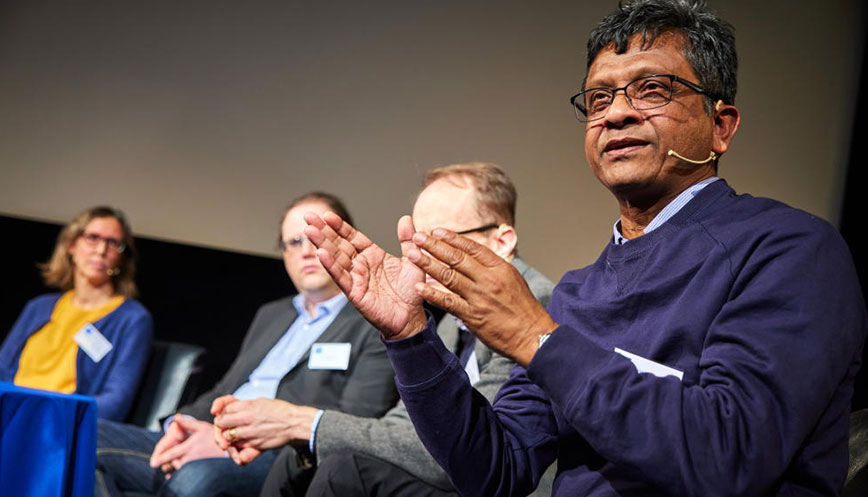
Thereafter gave Dr. Per Petersson, researcher at Division of Fusion Plasma Physics, an insight into how research at KTH has accelerated the development of a fusion reactor. With the help of material development, it will be possible to build the walls of the reactor more cheaply and faster in the future.
Staffan Norrga, Associate Professor in Power Electronics, provided a background to the research that led to the establishment of the company SciBreak. The company develops ultra-fast switches for medium-high and high voltage applications that could have a key role to play in the electricity grids of the future.
Finally, Tove Malmqvist Stigell, Associate Professor and Researcher in Sustainable Buildings, gave an insight into the opportunities that new legislation on climate certifications for buildings could provide for more sustainable construction methods.
Rapid growth of wind power
The line-up for the panel discussion entitled “Challenges and possibilities with large scale wind power developments” included Lennart Söder, Professor in Electric Power Systems and Markets; Ulla Mörtberg, Associate Professor in Energy Systems & Environmental Assessment samt Sergei Glavatskih, Professor in Machine Design and Tribotronics. Lennart Söder began with an account of the current rapid growth in wind power.
“Wind power currently accounts for about 18 per cent of Sweden’s electricity production. In just three years, investment in wind power production will almost double. An enormous expansion of wind power is underway,” said Söder.
“Among the challenges is to handle days without wind, but we will solve that, with hydrogen potentially offering a way forward,” he added.
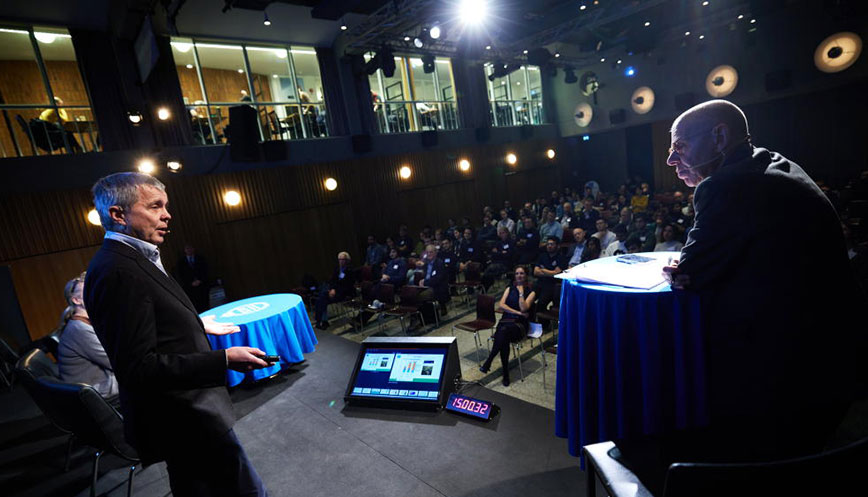
Ulla Mörtberg provided an overview of the challenges of planning and building new wind farms. Among other things, she has taken a closer look at the expansion of wind power in the Swedish counties of Västernorrland and Västra Götaland. Through analysis and development of new planning tools, the researchers hope to contribute to simplifying the wider use of wind power in line with Sweden’s national strategy for the sustainable expansion of wind power.
The panel concluded with Sergei Glavatskih, Professor of Machine Design and Tribotronics, with a look at the challenges of building offshore wind farms.
“This presents several technical challenges that we need to overcome, not least to succeed in controlling and monitoring each turbine remotely,” said Glavatskih.
Solar energy and batteries
The final discussion of the day was entitled “Future solutions combining solar cell technologies and recyclable battery solutions”, with Lars Kloo, Professor of Chemistry; Kerstin Forsberg, Associate Professor in Chemical Engineering; and Bo Normark, Honorary doctor at KTH, Industrial Strategy Executive EIT InnoEnergy.
At any moment, there could be a technological leap that makes solar energy a much more attractive energy source than it is today, Kloo said.
“We’re one discovery away in materials research and development and that breakthrough could come tomorrow. There’s a lot of research going on in this field and we have increased our understanding a lot in recent years,” said Kloo.
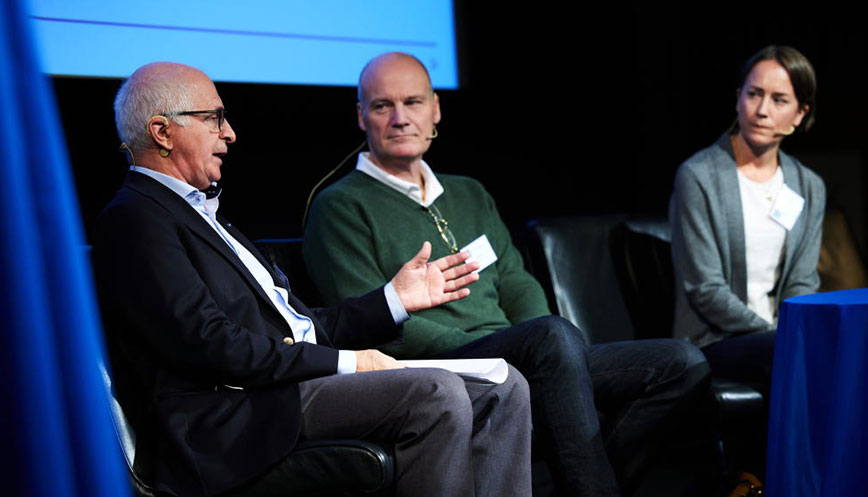
By combining solar cells and battery technology, solar power becomes an obvious alternative energy source, said Kerstin Forsberg. She went on to stress the need for more solutions to recycle today’s batteries.
“However, major investment is underway, including by Northvolt, which now wants to expand its planned recycling factory for batteries in Skellefteå. There are solutions already in place and we need to develop them further,” said Forsberg.
Bo Normark referenced the formation of the European Battery Alliance 2017, which was set up to strengthen European battery production.
“Since then, the sector has seen huge investment and is developing faster than it is in Asia. Battery prices have fallen by almost 90 per cent in 10 years and are competitive across the energy sector,” said Normark.
Today, the transport sector is the driving force behind batteries with high energy density. But at the same time, we will need batteries in different shapes and made with different technologies.
“One challenge we see in batteries with high energy density is the availability of raw materials; another is the need for expertise. Today, about 40 battery factories are being built in Europe that need trained staff,” said Normark.
At the same time, interest is strong among today’s students, explained Forsberg.
“We’re doing our best to educate as many people as possible today. They’ll have no trouble finding work in the future,” said Forsberg.

Dialogue seminar, 16 December

The closing remarks for this year’s KTH Energy Dialogue were delivered by Lina Bertling Tjernberg and Christophe Duwig, when they also awarded the prize for best poster presentations.
“We’ve seen many excellent research presentations today that we all want to be realized in the future,” said Duwig.
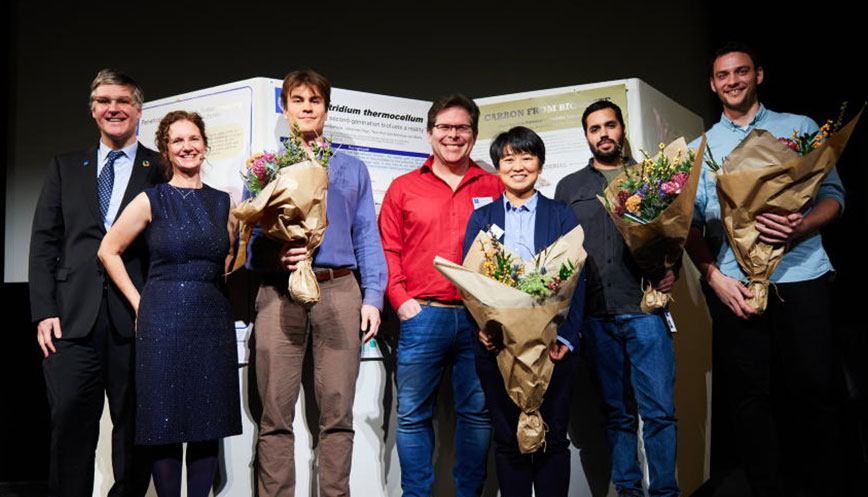
He also reminded participants about the Energy Platform’s call for internal funding - where we researchers are encouraged to apply for funding to test our ideas in collaboration with at least one researcher from another college.
Bertling Tjernberg also invited participants to the Janne Wallenius, Lennart Söder and Bertling Tjernberg, among others, will participate, providing different perspectives on nuclear power, wind power and the electrical grid, along with external researchers and experts.
“I hope that today’s Energy Dialogue has given you inspiration, new knowledge and contacts, and new strength to work further and continue our joint work for a sustainable society of the future. See you at upcoming events, and take care of yourselves!” concluded Bertling Tjernberg.
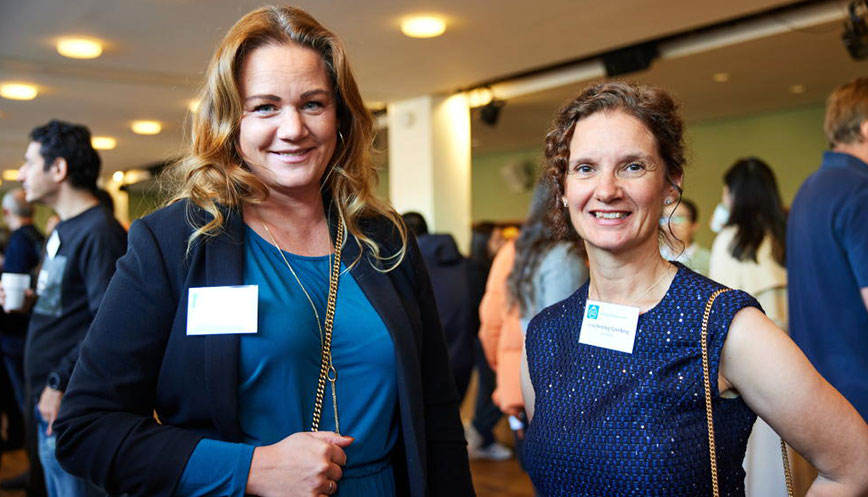
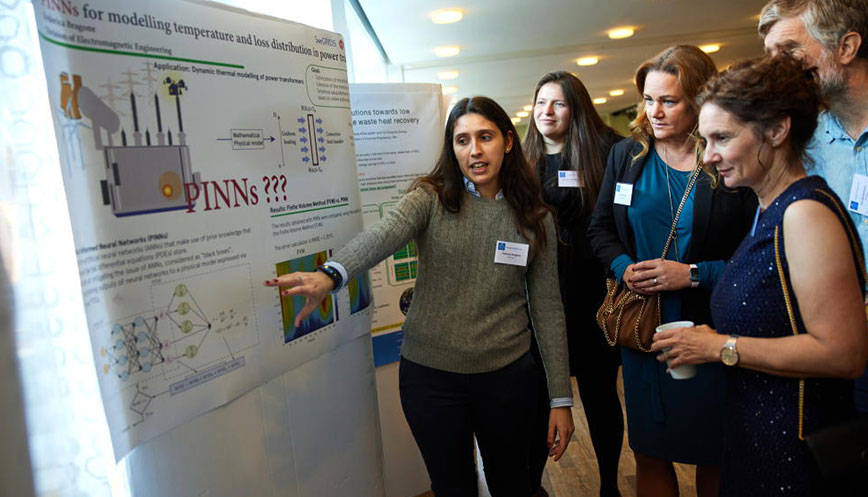
Text: Magnus Trogen Phalén
More information
KTH Energy Dialogue 2021 articles and program

